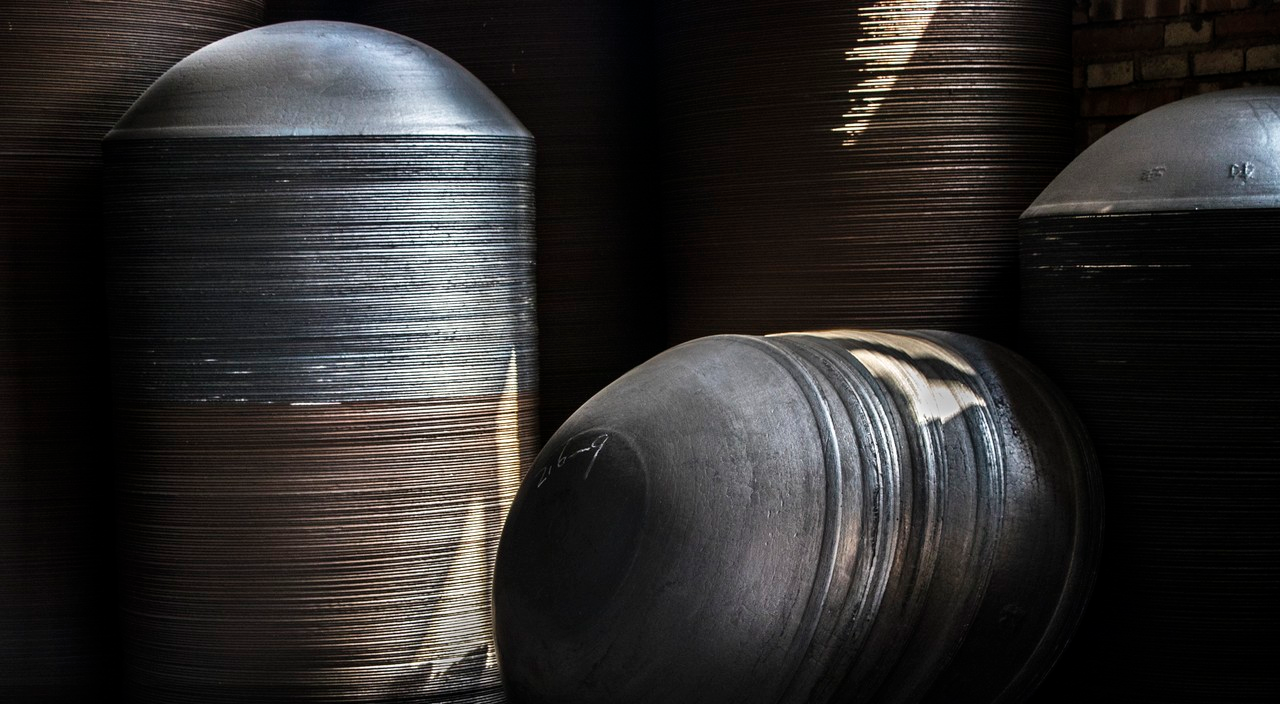Pressure vessel heads are critical components of pressurized equipment, and their selection directly impacts the safety, lifespan, and economics of the system. In recent years, clad plate heads (e.g., titanium-steel, stainless steel-steel, nickel-steel) have gained widespread use in industries such as chemical processing, petroleum, and nuclear power due to their combination of the base layer's strength and the cladding's corrosion resistance. Selection requires a comprehensive evaluation of structural design, material compatibility, and manufacturing feasibility to avoid over-engineering or potential failure risks.
The head structure determines stress distribution and manufacturing complexity. A comparison of common types includes:
Hemispherical Heads: The most uniform stress distribution, with the thinnest wall thickness under the same pressure, but deep drawing and forming are challenging. Often used in high-pressure applications.
Elliptical Heads (Standard): Wall thickness approximates that of the cylinder, facilitating welding. An optimal choice balancing performance and cost.
Dished Heads: Suitable for manual forming, but stress concentration at transition areas may lead to cracking. Gradually being replaced by elliptical heads.
Conical Heads: Ideal for discharging viscous or suspended media but require knuckled edges to reduce edge stress.
Selection Advice: Standard elliptical heads are preferred, as their wall thickness matches the cylinder, simplifying procurement and welding processes.
For corrosive media (e.g., acids, alkalis, seawater), clad plates achieve a balance between cost and performance through "thin cladding on thick substrate":
Stainless Steel-Steel Clad Plates: Suitable for most chemical environments, such as sulfuric acid and alkali containers.
Titanium-Steel Clad Plates: Resistant to chloride ion corrosion, widely used in seawater desalination, electrolyzers, and other equipment.
Nickel-Steel Clad Plates: Resistant to high-temperature oxidation, ideal for catalytic cracking units.
Material Selection Principles:
Determine the cladding material based on medium corrosivity, temperature, and pressure.
The base material must meet strength requirements (e.g., Q345R for medium-low pressure vessels).
Prioritize cost-effectiveness: When stainless steel thickness exceeds 12mm, cladding or composite structures are more economical.
Forming Technologies: Heads are primarily formed through stamping, spinning, or explosive forming. Deep structures (e.g., hemispherical heads) require large hydraulic presses.
Cladding Processes: Hot rolling or explosive welding must ensure bonding strength to prevent delamination failures.
Standard Specifications:
Domestic compliance with the "Clad Plates for Pressure Vessels" series (e.g., JB/T 4743 for titanium-steel clad plates).
International references include ASME B16.9/EN 13445, with material creep performance verification required for high-temperature equipment.

Lightweight Design: Optimize head thickness using finite element analysis (e.g., ANSYS) to reduce material consumption.
Customized Solutions: Develop specific composite materials (e.g., Hastelloy-steel) for emerging fields like new energy and semiconductors.
International Compliance: Export equipment must meet EU PED 2014/68/EU directives, emphasizing risk analysis and material certification.
| Head Type | Application Scenario | Advantages | Limitations |
|---|---|---|---|
| Hemispherical | High-pressure, large-diameter vessels | Uniform stress, thin walls | High manufacturing difficulty, high cost |
| Elliptical (Standard) | General chemical equipment | Easy welding, cost-effective | Not suitable for high aspect ratio needs |
| Clad Plate Heads | Corrosive media environments | Combines strength and corrosion resistance | High process requirements |
Conclusion:
Selecting clad heads for pressure vessels is a multi-dimensional decision-making process that requires balancing structural mechanics, materials science, and process economics. With the advancement of standardization (e.g., the release of the English version of "Clad Plates for Pressure Vessels"), technical barriers domestically and internationally are gradually being overcome. In the future, digital twin-based selection simulations and green composite materials will further drive efficient industry development.
If you want to know more information about clad head, please contact us. We will provide professional answers.